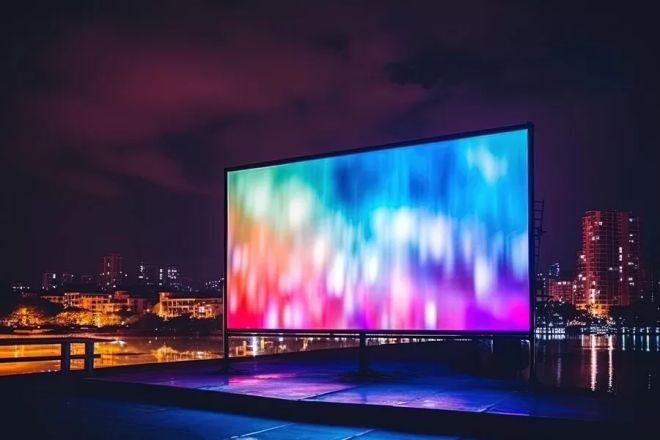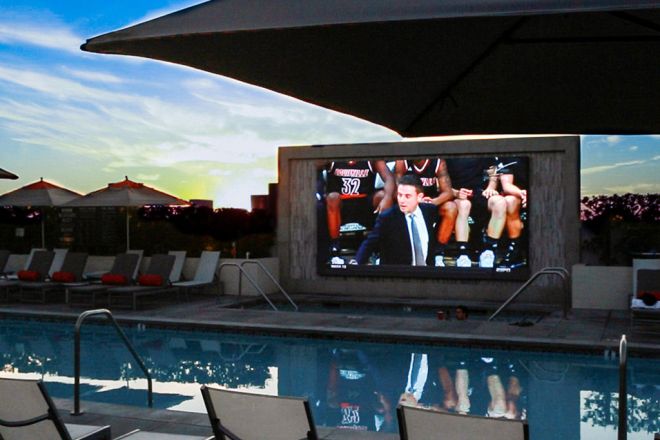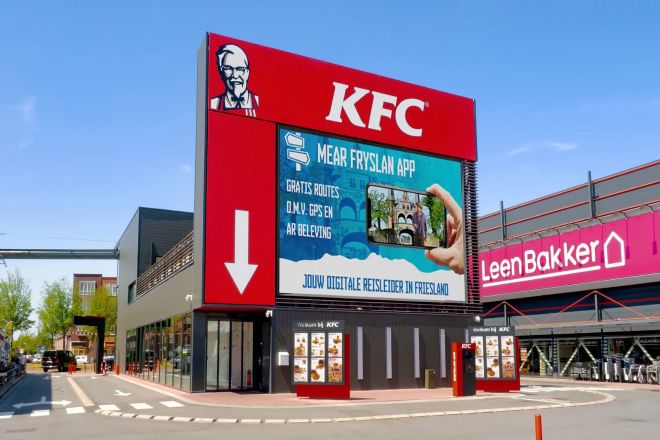Introduction

With the continuous development of technology, LED displays have become an indispensable part of our daily life. From bustling commercial streets to quiet parks, from lively stadiums to quiet transportation hubs, Afficheurs LED are everywhere. They bring us a colorful visual experience with their high brightness, high definition, energy-saving, and environmental protection. However, the display effect and function of an LED display depend not only on its technical specifications and quality but, more importantly, on its installation location.
A good installation location can maximize the potential of the LED display and allow it to show the best effect in various environments. Therefore, choosing a suitable installation location is crucial for LED displays.
1. Basic considerations for the installation location of LED displays
1). Visibility and viewing angle
Visibility: Ensure that the content of the LED display is clearly visible within the line of sight of the target audience. This requires considering the audience’s viewing distance, line of sight height, and possible obstructions such as buildings, trees, etc.
Viewing angle: In order to allow as many viewers as possible to clearly see the content of the display, it is necessary to ensure that the installation angle and height of the display can cover the widest viewing range. Generally speaking, the larger the viewing angle of the LED display, the wider the range that the audience can clearly watch.
2). Safety
Structural safety: The installation location must be able to bear the weight of the display and have sufficient stability to prevent collapse or damage caused by natural factors such as wind, rain, and earthquakes.
Environmental safety: Avoid installing the display in areas susceptible to natural disasters, such as floods, landslides, and other frequent areas. At the same time, avoid installing it in areas with dense traffic but unstable structures, such as temporary booths or shaky buildings.
3). Entretien et maintenance
Easy to maintain: The installation location of the display should be convenient for maintenance personnel to carry out daily maintenance and maintenance work, such as cleaning the screen and replacing parts. If the installation location is too high or too hidden, it will increase the difficulty and cost of maintenance.
Easy to maintain: Maintenance work of the display is equally important, such as regularly checking whether the power supply, circuit, cooling system, etc., are operating normally. An easy-to-maintain installation location can ensure that the display is always in good working condition.
2. The positive impact of a good installation location on LED display

1). Améliorer les effets visuels
- Higher brightness and contrast:
An ideal installation location can avoid strong ambient light interference, such as direct sunlight or other strong light sources, thereby improving the brightness and contrast of the LED display, ensuring that the content of the display can be clearly seen even outdoors or in a bright light environment.
- Clearer picture quality:
A suitable installation location can avoid the obstruction of the display by obstructions (such as trees, buildings, etc.), as well as visual interference caused by reflections on the surface of the display. These factors work together to make the LED display present a clearer picture quality.
- Better viewing experience:
Optimizing viewing distance and angle is an important consideration when choosing an installation location. A good installation location can ensure that the audience has the best viewing experience at a comfortable viewing distance and angle.
2). Enhance the effect of information transmission.
- Attract more attention:
Installing LED displays in areas with high traffic or visual focus can attract more audience attention. This location choice helps to increase the audience’s attention to the content of the display and improve the dissemination effect of information.
- Increase information coverage:
A good installation location can ensure that the content of the display covers a wider audience. Whether in commercial areas, transportation hubs, or public places, a wider range of information dissemination can be achieved through reasonable location selection.
- Facilitate interaction with the audience:
Setting up interactive sessions or interactive advertisements at appropriate installation locations can increase audience participation. For example, setting up interactive games or questionnaires in crowded places such as shopping malls or stadiums can attract audiences to actively participate and increase brand awareness.
3). Extend service life
- Avoid harsh environments:
Choosing an installation location that avoids harsh environments such as direct sunlight, high temperature, and high humidity can reduce the risk of damage to the display due to environmental factors. This helps to extend the service life of the display and reduce maintenance costs.
- Reduce maintenance costs:
A good installation location not only helps to reduce the risk of damage to the display but also reduces maintenance costs. For example, choosing a location that is easy to maintain and maintain can facilitate maintenance personnel to carry out daily inspections and repairs, reducing downtime and maintenance costs caused by failures.
3. The best installation location for LED displays in different scenarios
- Publicité commerciale
In busy commercial areas such as shopping malls and pedestrian streets, the best installation location for LED displays should be in places with dense traffic and wide sightlines.
For example, it can be installed at the entrance of a shopping mall, at the intersection of a pedestrian street, or in front of a shop with a large flow of people. Such a location can ensure that consumers pay attention to the content of the display screen and improve the advertising effect.
- Des sports événements
For sports venues such as stadiums and stadiums, the best installation location for LED display screens is directly opposite or high up in the auditorium. This ensures that the audience can clearly see the real-time score, game information, or advertising content on the display screen while watching the game.
If conditions permit, multiple display screens can also be set up to cover the auditorium from different angles to provide a more comprehensive viewing experience.
- Public transportation
In public transportation places such as subway stations and bus stations, the best installation location for LED display screens is the passenger waiting area or entrance and exit.
These places are areas where passengers stay for a long time. Installing display screens can facilitate passengers to obtain real-time information while waiting or entering and exiting the station, such as vehicle arrival time, weather forecast, news information, etc.
In addition, interactive functions can be set according to specific needs, such as querying bus routes, purchasing tickets, etc., to improve passengers’ travel efficiency.
- Extérieur Landscape
In outdoor landscape areas such as parks and squares, the best installation location for LED display screens is landscape nodes or high places. These places are usually places for people to relax and entertain, and installing display screens can add interest and interactivity to the landscape.
For example, display screens can be set up at the entrance of a park, in the center of a square, or around important scenic spots to play city promotional videos, tourism introductions, cultural performances, and other content, providing tourists with a rich visual experience. At the same time, as part of the city’s night view, the lighting effect of the display screen can also add a unique charm to the city.
4. How do you ensure that your installation location is appropriate?

In order to ensure that the installation location of the LED display screen is appropriate, we can refer to the following steps and key points:
1). Visibility and viewing angle evaluation
Determine the viewing distance: Calculate the appropriate viewing distance based on the size and resolution of the LED display screen. Ensure that the display screen content is clearly visible within the line of sight of the target audience.
Choose the best viewing angle: LED displays usually have a wider viewing angle, but to ensure the best viewing effect, ensure that the target audience can view the display screen content at a suitable angle.
2). Safety considerations
Evaluate structural safety: Ensure that the installation location can withstand the total weight of the display screen and its accessories. According to the load-bearing requirements, it usually needs to be more than 5 times the total weight.
Check environmental safety: Avoid installing in areas susceptible to natural disasters, such as floods, landslides, and other frequent areas. At the same time, avoid installing in areas with dense traffic but unstable structures.
3). Maintenance and convenience
Ensure easy maintenance: The installation location should be convenient for maintenance personnel to carry out daily maintenance and maintenance work, such as cleaning the screen, replacing parts, etc. Consider setting up maintenance channels or reserving maintenance space.
Easy maintenance: Regularly check whether the power supply, lines, cooling system, etc., are operating normally to ensure that the display is always in good working condition.
4). Scene-specific considerations
Commercial advertising: Located in a location with dense traffic and wide sightlines, such as shopping mall entrances, pedestrian street intersections, etc.
Sports events: Installed directly opposite or high in the auditorium to ensure that the audience can see clearly.
Public transportation: Installed in the passenger waiting area or at the entrance and exit to facilitate passengers to obtain information.
Outdoor landscape: Installed at landscape nodes or high places as part of the city night scene.
5). Other considerations
Consider ambient light: Avoid strong ambient light interference, such as direct sunlight or other strong light sources, to ensure the brightness and contrast of the display.
Power requirements: Ensure that the installation location has a stable power supply and meets relevant electrical safety standards.
Environmental requirements: Install in a dry, well-ventilated environment to avoid adverse factors such as moisture or high temperature.
Conclusion
In summary, a good installation location has a far-reaching impact on the LED display. It can not only improve the visual effect and information transmission effect of the display but also extend its service life and reduce maintenance costs.
Therefore, when selecting and installing LED display screens, we should fully consider the selection factors of the installation location to ensure that the display screen can play its maximum potential.
Enfin, si vous souhaitez en savoir plus sur les écrans d'affichage LED, veuillez nous contacter.
